Editor's note: The podcast episode accompanying this story is about the history of Chicago's disco scene, in which drag performers played a key role.
Chicago has a vibrant drag scene. On any day of the week you can catch drag performances at venues across the city: Clubs like Roscoe’s, Berlin and La Cueva all host popular evening events, and the Walnut Room and Furama are just two venues that host some of the city’s celebrated drag brunches.
The history of drag in Chicago is known to go all the way back to the late 1890s, at gathering places like Dill Pickle Club and political fundraisers for the city’s 1st Ward.
To understand how the city’s drag scene has evolved since then, we spoke with James and Kurt Conley, two of the curators behind Gerber/Hart's 2018 exhibit The City That Werqs: A History of Chicago's Drag Revolutionaries. We also spoke with two current drag performers in Chicago, Miss Toto and Abhijeet, about how that legacy is carried on today.
James and Kurt Conley say there are a few things that have set the Chicago drag scene apart from the very beginning.
One is the diversity of the scene. Not just in terms of the performers, but also who came to see them. “From the very early days, you have people from all different walks of life, and they all wanted to celebrate together,” says James Conley.
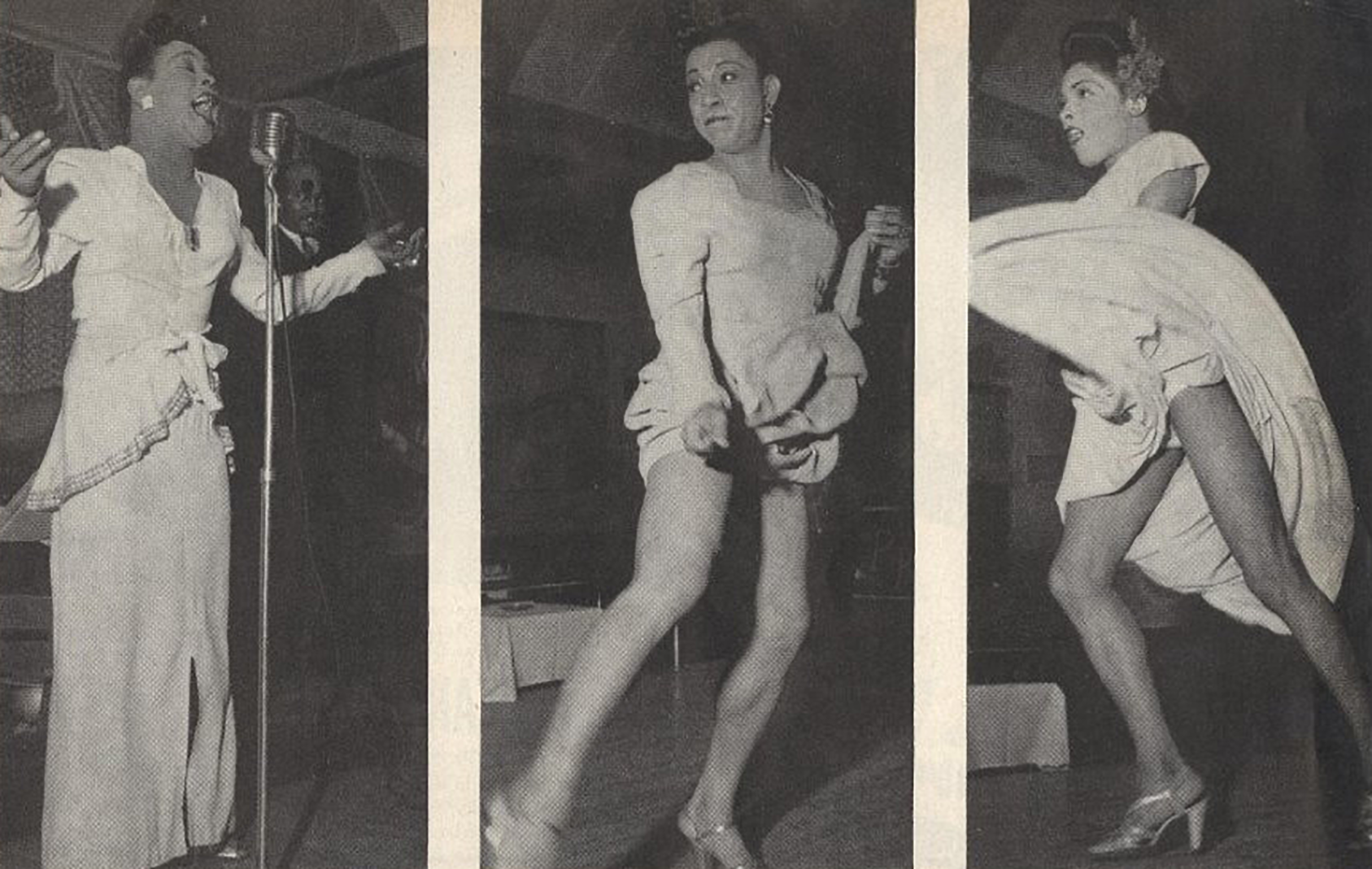
Another factor that makes Chicago unique is that "in New York you’ve always had a more theatrical drag scene that really persists today,” James Conley explains. “You have people kind of DIY-ing it here.”
And third, there's the sheer variety and abundance of types of performances happening in the city — from the racial, ethnic and gender identities of the performers to the styles of drag they perform, including their roles as social activists in their communities.
“I've been in a lot of different drag scenes, but nothing that I've seen compares to Chicago as far as the amount of entertainers that we have and the diversity that we have,” Miss Toto says. “You can get a drag king, drag queen, anything in between.”

To understand more about the role drag performers have played in Chicago, we took a look back at several different eras of drag in the city — in particular, the 1960s and ’70s, when the art form was becoming more popular in the early days of gay liberation. During those decades, people built upon a long history of queer folks creating safe spaces where they could experiment with drag — especially at discotheques, which in those years provided havens for drag to flourish.
1890s-1950s
From the 1890s through the 1950s, Chicago saw the birth of a burgeoning drag scene that attracted people of different backgrounds, both on the North and South Sides.
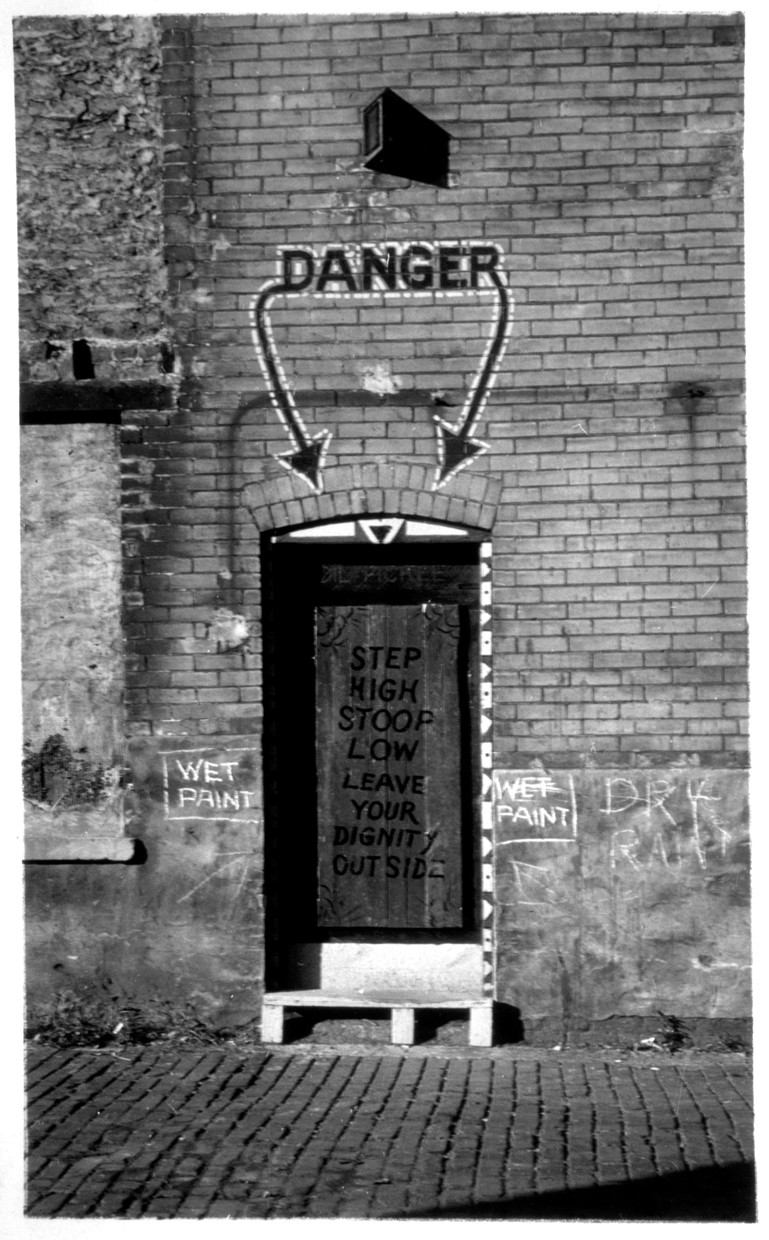
At the same time, two aldermen began a tradition of throwing political fundraisers in the form of debaucherous parties. “They were lambasted for being these Dionysian bacchanals,” says Kurt Conley.
According to Lloyd Wendy and Herman Kogan’s book Lords of the Levee: The Story of Bathhouse John and Hinky Dink, this annual event was known as the First Ward Ball. The events brought revelers from across the city.
By the 1930s, as white queer people flocked to North Side gay bars, the Black queer community cultivated its own nightlife on the south side, particularly in Bronzeville, according to Allen Drexel’s chapter “Before Paris Burned” in the book Creating a Place for Ourselves: Lesbian, Gay, and Bisexual Community Histories.
This gave rise to gay cabarets like Club DeLisa and The “Cozy” Cabin Inn, where the main events were often drag balls, which were hugely important for queer people of color in cities including Chicago.
One of the most famous of the balls on the South Side — Finnie’s Ball, named after founder Alfred Finnie — could draw crowds of up to 1,000 people. It took place in venues across the South Side, according to Drexel.

The disco era: 1960s-’70s
During this era, the queer community fought hard to gain some very basic rights, like the freedom to dance with someone of the same gender. At the same time, disco music was becoming all the rage. The combination of the four-on-the-floor beats and emerging gay liberation set the stage for a lot of creative expression. But the drag scene remained mostly out of the public eye because the practice was still criminalized according to laws that prohibited “wearing clothing of the opposite sex.” Drag performers were often a lightning rod for the dangers faced by queer folks during this period. But that didn’t stop them.
Beginning in the 1960s a number of gay bars featuring drag performers opened around Clark and Diversey. One of the more famous was Club Chesterfield, which incubated a new generation of Chicago drag performers. “They would have these events called turnabout nights, where the bartenders would perform in drag and the drag performers would tend bar,” says James Conley.
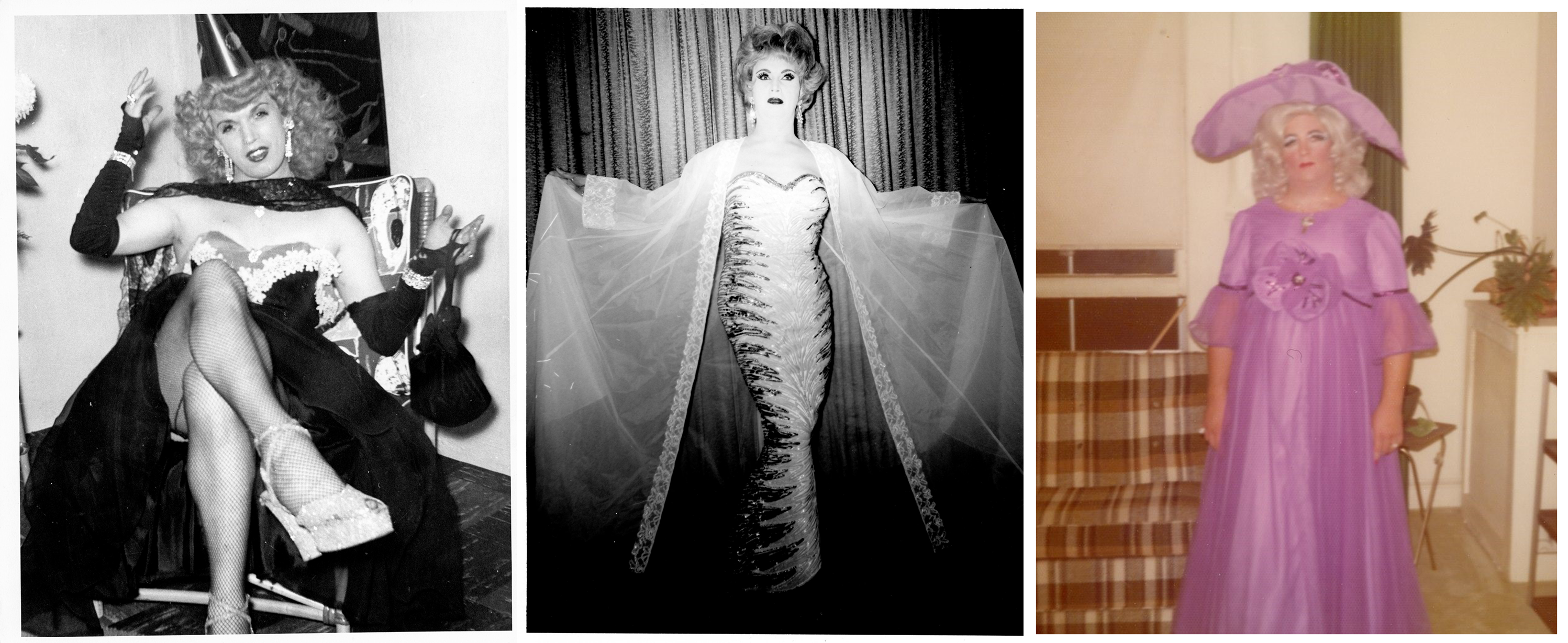
One of the most famous performers at Club Chesterfield was Miss Tillie, who was known as “The Dirty Old Lady.” In the Gerber/Hart Library and Archive’s photo collection, Miss Tillie can be seen wearing towering wigs, long, glamorous dresses, chandelier earrings and huge glittering necklaces. But what earned her the title of “The Dirty Old Lady” were her raunchy jokes and flirtatious personality.
Another iconic drag performer at Club Chesterfield was Roby Landers. Conley says Roby brought an outsized personality to the stage, a style that drag performers in the coming years and decades emulated. “Big, big personality,” James Conley says of Landers, “A lot of comedy. And as [Baton Show Lounge owner] Jim Flint says, you don’t mess with her.” Landers went on to open a well-known drag bar called House of Landers.

Throughout the 1960s Chicago drag became easier to find, and many performers became more widely known. But, as Chicago's gay population grew more visible, there was backlash. Gay bars were subject to countless police raids, where many drag performers were arrested again and again.
“The sad reality was that I think people knew that if you go into a gay bar, the likelihood that you’re going to be arrested is high — especially if there’s drag performance, especially if there’s anything loud going on, because you’re attracting attention to yourself,” explains James Conley. “There’s a quote we have from Chuck Renslow, who says, ‘The raids in those days were terrible. They always used to say, when you go in a gay bar, stand by the door so you get a seat in the paddywagon.’”
That’s why little is known about the personal lives of most performers — including Miss Tille and Roby Landers. So-called “cross-dressing” laws were still in effect during this period. And newspapers at the time would print the names of those arrested in raids, leading many to lose their jobs and be ostracized by their families.
But in 1970 restrictions against same-sex couples dancing were lifted, which led to fewer raids on spaces like gay discos where drag performances were also happening.
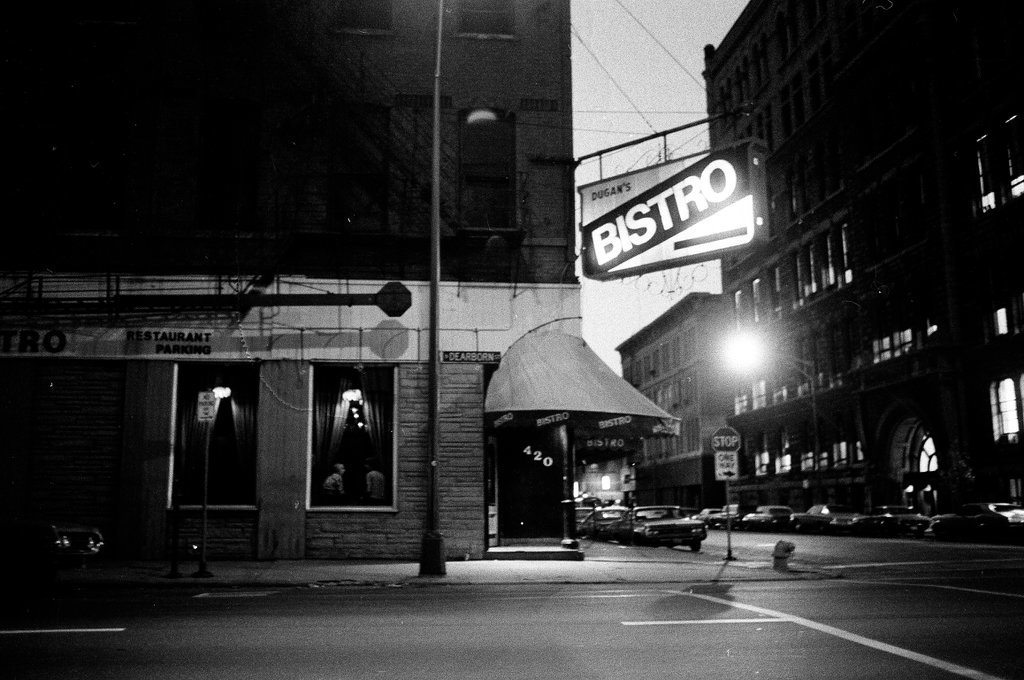
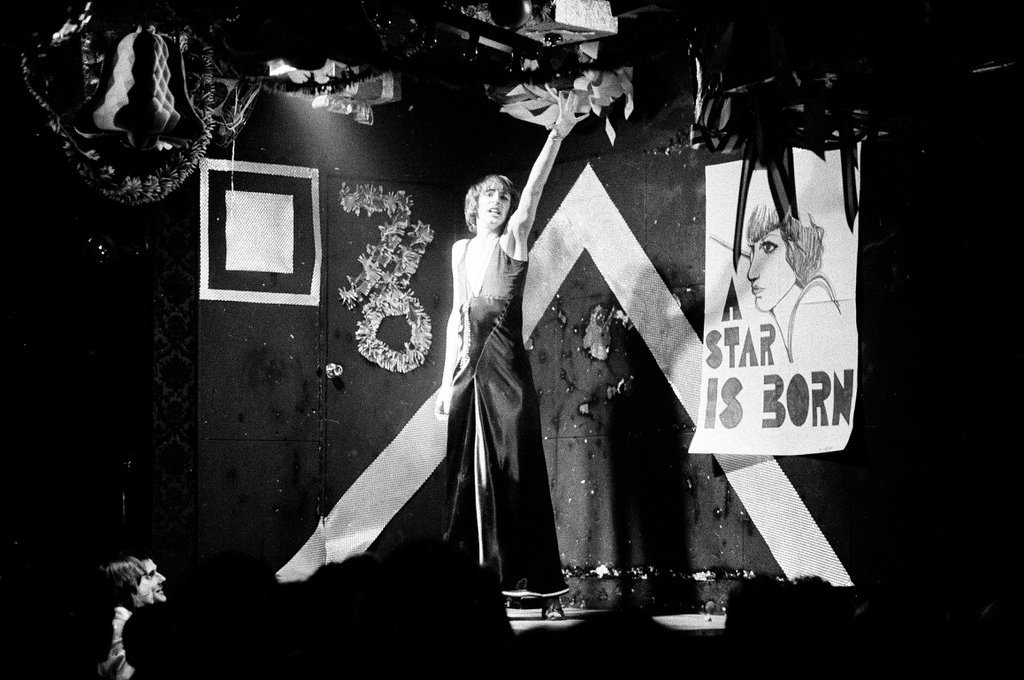
One of the most popular of these places was Dugan’s Bistro, which opened in 1973 at 420 N. Dearborn. (Ironically, it was located across the street from a police station.) Some came to the venue because of the DJ, Lou DeVito, who spun everything from Diana Ross to Donna Summer, Viola Wills to the Isley Brothers. And many Bistro patrons came to see the discotheque’s resident drag performer: the Bearded Lady, an icon of Chicago’s disco scene in the 1970s.
"The Bearded Lady was this symbol of the metamorphosis of the community, of people shedding things and becoming their truer self, and just being okay with that," says historian Owen Keehnen. "Just the celebratory, outrageous, love yourself vibe of it. And the Bearded Lady did that for years and was enormously popular."
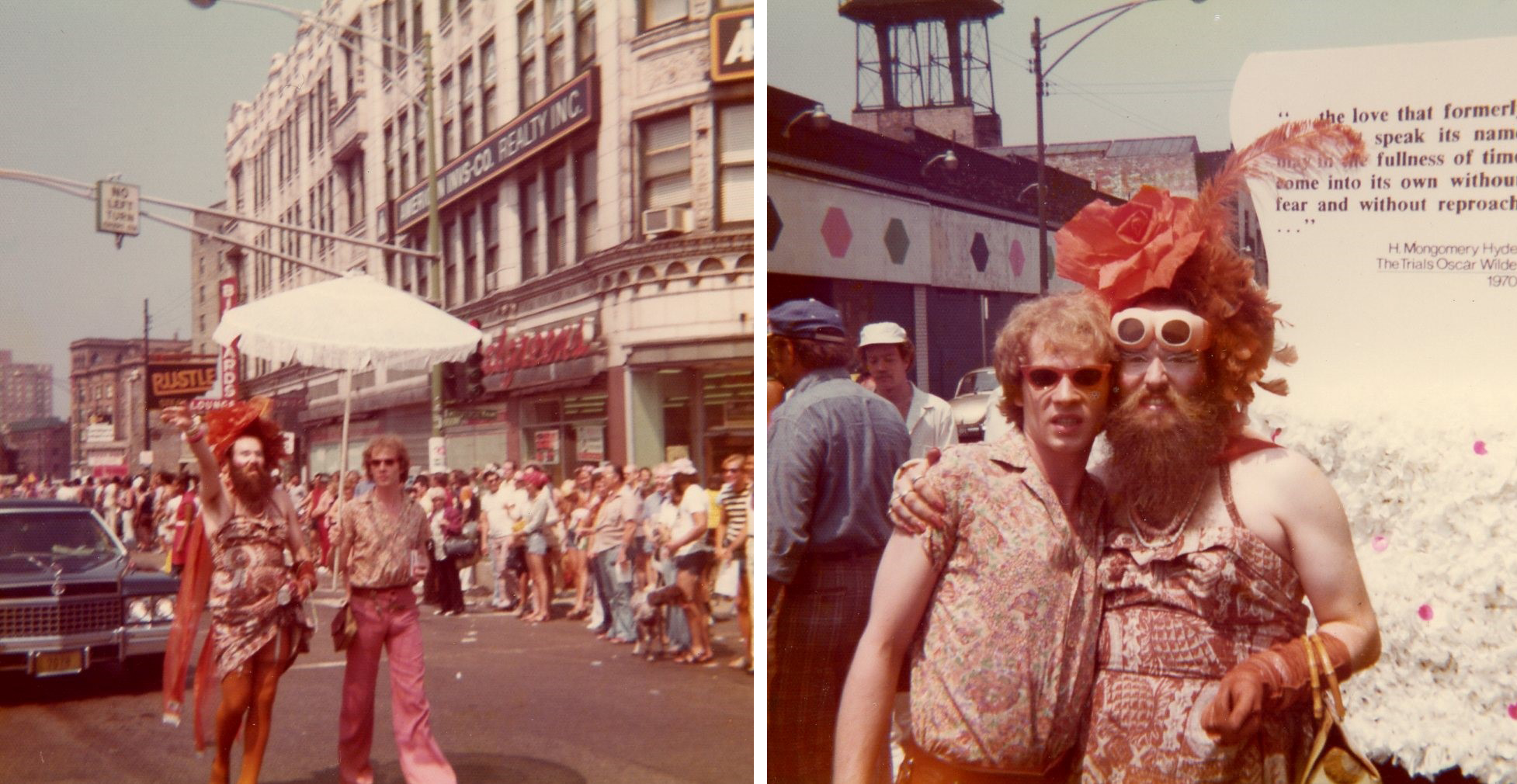
But Dugan’s, like other gay discos on the North Side, was not welcoming to everyone. The venue used unwritten door policies — like requiring multiple IDs — to limit the number of Black people who were allowed in at any one time, those who were around at the time recall.
It wasn’t until 1978 that the cross-dressing ban under the public morals law was officially removed from Chicago’s municipal code. But this win was overshadowed quickly by a redevelopment project that forced many gay bars to close on the Near North Side in the early ’80s. Plus, there was an even more destructive force on the horizon: the AIDS epidemic.
1980s-today
As the AIDS epidemic devastated the queer community in Chicago in the 1980s, it impacted drag performers in multiple ways.
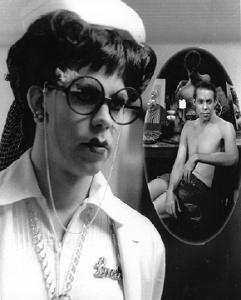
“You see a lot of drag performers as real social activists in this period of time,” says James Conley.
Other artists, like legendary performer JoJo Baby, who passed away this year, experimented with avant-garde costumes that were purposefully unsexy, in direct response to the AIDS crisis.
The 1980s also put Chicago centerstage as the birthplace of a major drag competition. The Miss Continental pageant, one of the most prestigious drag pageants in the US, was started in Chicago in 1980 by Jim Flint. After witnessing discrimination against performers who took hormones or had surgical enhancements at the Miss Gay America pageant, he sought to create his own pageant that would be an inclusive space for all female impersonators (as they are known at the pageant), according to Tracy Baim and Owen Keehnen’s book Jim Flint: The Boy from Peoria.
So much has changed in Chicago since the 1960s that today the official tourism website for Chicago promotes a variety of drag shows as some of the city’s top entertainment options.
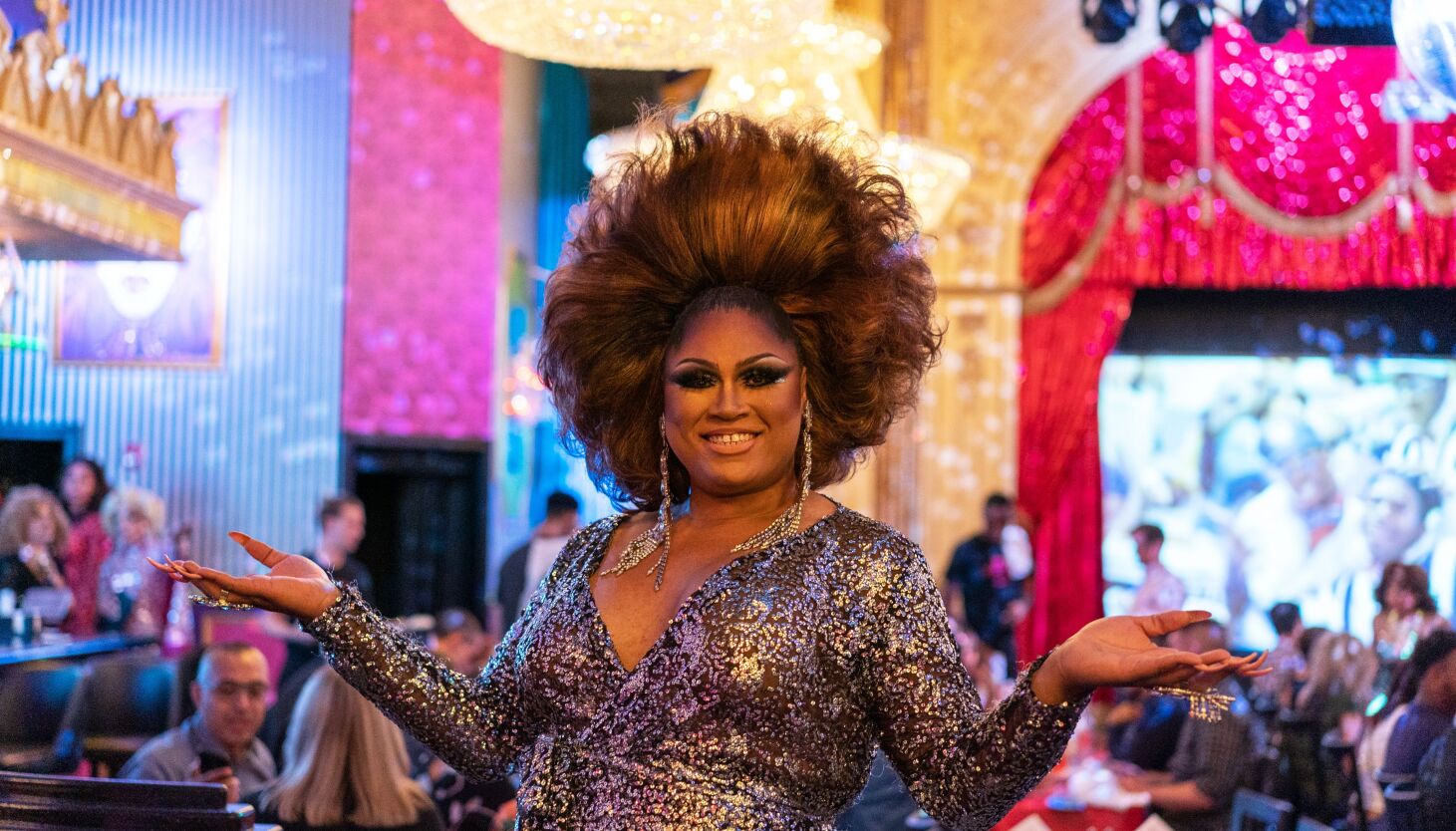
But just because Chicago drag has earned mainstream recognition doesn’t mean it’s lost its connection to the creativity and radicality that defined earlier eras.
Today, events like Lucy Stoole’s Fabitat and Black Girl Magic featuring The Vixen and Shea Couleé are intentional responses to the history of racism at Northalsted venues, James Conley says, which in some cases persists today.
And some of those same performers that helped shape earlier movements in the Chicago drag scene are still active today.
“There's so many historic drag performers that are currently still working and have been working for 30, 40 years, like Chilli Pepper, who's the first ever Miss Continental, is still working every week at the Baton Lounge,” says Abhijeet, a drag queen and nightlife producer in the city. “So I don't think Chicago drag history is something to ever look at as the past. It's a living history. It's there. Someone like JoJo Baby, who just very recently passed away, was a living legend. And I think that’s what gets lost a lot when we're talking about drag history.”
Many performers say the sense of community in the scene is stronger than ever.
“It went from drag just being an art form and self-expression, but it's become so much more than that. It’s become people's livelihoods,” says Miss Toto. “It's literally your family. I don't have any family in Chicago. The people that I spend my days in and days out with, the queer people that I surround myself with, are my family.”
But Miss Toto says that it’s important to appreciate where it all began.
“I feel like a lot of people do not know the history, or care to learn about the history, of the people that created this scene,” she says. “It’s important to understand why nightlife is important, why queer nightlife is important, who the people are that helped build this or create this, so you just understand where you come from and why these spaces exist that you're partaking in.”
More about our question-asker
Uptown resident Bizzy Stephenson moved to Chicago last year. She’s the lead singer of a five-piece disco and funk band called Superfloss (whose cover of “You Should Be Dancing” by the Bee Gees is featured in the podcast episode linked at the top of this story!).

“That album was life-giving when I was in my room alone, in May 2020, literally by myself in my bedroom, jumping up and down to ‘Levitating,’” Bizzy said. “And she just really, I think, captured something in that album that I hadn't heard in a long time.”
Bizzy’s fascination with the Chicago disco scene in the 1970s led her to ask Curious City a question about what that scene was like and why it faded away. That question is answered in the podcast episode linked at the top of this page, and inspired this web story focused on the role of drag performers in that scene and beyond.
Many thanks to the volunteers and staff at Gerber/Hart Library and Archives, without whom this story would not have been possible. Much of the information and photos used in this story came from Gerber/Hart's 2018 exhibit "The City that Werqs: A History of Chicago's Drag Revolutionaries," curated by Chase Ollis, James Conley, Kurt Conley, Jen Dentel and Kevvie Wilhelmina.
Additional reporting came from Maggie Sivit, Curious City’s digital and engagement producer.
JP Swenson is the former Luminary Podcast Fellow with Curious City and current interim producer for Nerdette. Follow him @jp_swenson.
Marie Mendoza is WBEZ’s Podcast fellow. Follow her @marieannmendoza.


